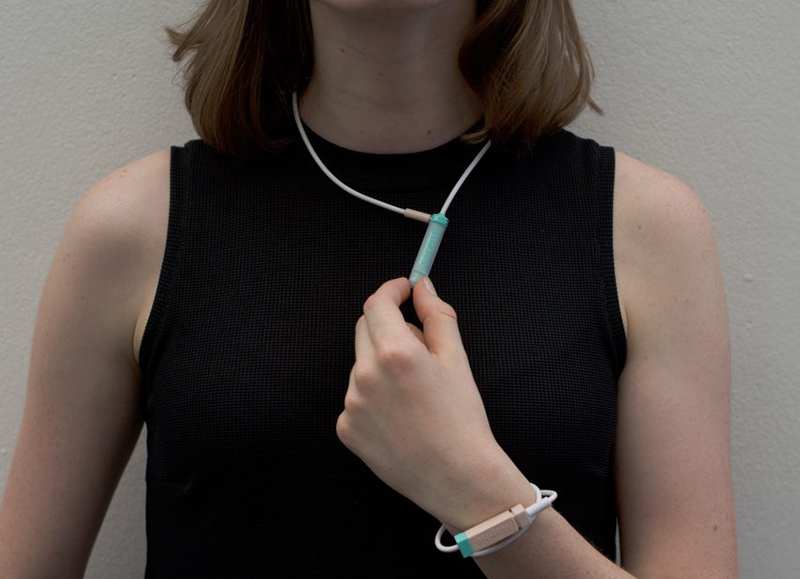Approximately 1 billion people across the globe are living with some type of disabilities. Emerging technologies like IoT, wearables and 5G could help people with disabilities live independently and contribute more in the workplace, and enhance their quality of life.
Read more Comcast Partners with NuEyes to Help Customers with Visual Disabilities Watch TV
Maptic
Maptic is a wearable navigation system for the visually impaired. Brunel University graduate Emilios Farrington-Arnas designed this collection of wearable devices that vibrate to guide visually impaired wearers to a destination. The maptic set consists of a visual sensor that can be worn like a necklace, and a series of feedback units that can be clipped onto clothing, or worn around the wrist. The sensor connects to a voice-controlled iPhone app, so it can use GPS to direct the wearer. It does this through a series of vibrations to the left or right side of the body.
Talkkit
Talkkit helps those with speech and language disorders better communicate with people around them. This gadget makes an interpretation of unrecognizable pronunciation into understandable speech so others can comprehend what the individual intended to say, in spite of their talking impediments. Talkkit likewise can translate the pronunciation into any language. This wearable innovation works by learning the person’s speech patterns and afterward making an individual word reference. Talkkit then distinguishes and perceives the articulation and makes an interpretation of it into speech others can comprehend.

Rex
Rex Bionics has developed Rex, an exoskeleton designed for people with mobility impairments, including those with more severe disabilities. REX offers rehabilitation options and improves mobility for a wide range of people. REX is fully adjustable to one’s measurements within minutes and learning to use it is quick and easy for the user. Rex is hands free for functional exercise and activities of daily living. It allows new users to walk with autonomous control in a few minutes. It’s fully automated for forwards, backwards, sideways and turning movements. Rex squats, lunges, sit-to-stand, leg swings, and stretches. Rexercise mode enables structured, reproducible functional exercise programs directed by healthcare professionals.
Read more Wearable Device Uses Ultrasound to Detect Obstacles for Blind People
How 5G Can Benefit People with Disabilities
5G can help people with disabilities move and navigate more independently. Blind people, who use a white cane to get around, can move independently through the emerging mobile technologies. For example, 5G-connected smart glasses paired with a smartphone can provide them real-time audio feedback, which can help them to navigate in a city independently. Facial recognition can tell them who is approaching, reports DisabilityInsider. It can also provide information about bus and train routes or even food on shelves in the store.
Conclusion
IoT, wearables and 5G has the ability to make our everyday tasks easier. The few wearables we discussed above are only the beginning of what IoT and wearables can do for people with disabilities. Although many people around the globe do not have access to these technologies, the rising popularity tells us it won’t be too long when these technologies will immensely impact the lives of disabled people all over.












